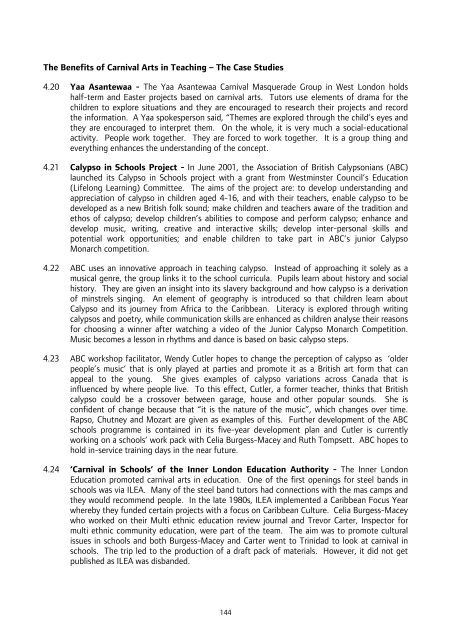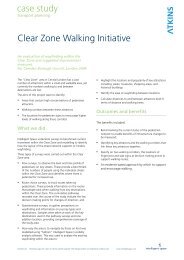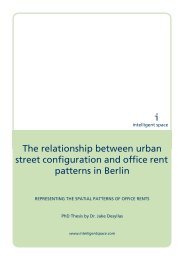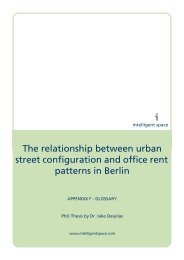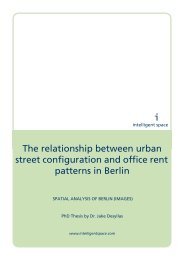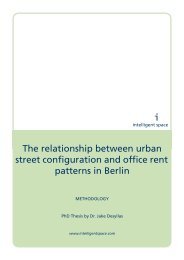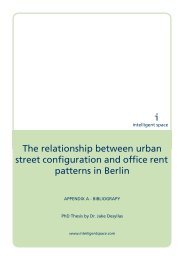Notting Hill Carnival Strategic Review - Intelligent Space
Notting Hill Carnival Strategic Review - Intelligent Space
Notting Hill Carnival Strategic Review - Intelligent Space
Create successful ePaper yourself
Turn your PDF publications into a flip-book with our unique Google optimized e-Paper software.
The Benefits of <strong>Carnival</strong> Arts in Teaching – The Case Studies<br />
4.20 Yaa Asantewaa - The Yaa Asantewaa <strong>Carnival</strong> Masquerade Group in West London holds<br />
half-term and Easter projects based on carnival arts. Tutors use elements of drama for the<br />
children to explore situations and they are encouraged to research their projects and record<br />
the information. A Yaa spokesperson said, “Themes are explored through the child’s eyes and<br />
they are encouraged to interpret them. On the whole, it is very much a social-educational<br />
activity. People work together. They are forced to work together. It is a group thing and<br />
everything enhances the understanding of the concept.<br />
4.21 Calypso in Schools Project - In June 2001, the Association of British Calypsonians (ABC)<br />
launched its Calypso in Schools project with a grant from Westminster Council’s Education<br />
(Lifelong Learning) Committee. The aims of the project are: to develop understanding and<br />
appreciation of calypso in children aged 4-16, and with their teachers, enable calypso to be<br />
developed as a new British folk sound; make children and teachers aware of the tradition and<br />
ethos of calypso; develop children’s abilities to compose and perform calypso; enhance and<br />
develop music, writing, creative and interactive skills; develop inter-personal skills and<br />
potential work opportunities; and enable children to take part in ABC’s junior Calypso<br />
Monarch competition.<br />
4.22 ABC uses an innovative approach in teaching calypso. Instead of approaching it solely as a<br />
musical genre, the group links it to the school curricula. Pupils learn about history and social<br />
history. They are given an insight into its slavery background and how calypso is a derivation<br />
of minstrels singing. An element of geography is introduced so that children learn about<br />
Calypso and its journey from Africa to the Caribbean. Literacy is explored through writing<br />
calypsos and poetry, while communication skills are enhanced as children analyse their reasons<br />
for choosing a winner after watching a video of the Junior Calypso Monarch Competition.<br />
Music becomes a lesson in rhythms and dance is based on basic calypso steps.<br />
4.23 ABC workshop facilitator, Wendy Cutler hopes to change the perception of calypso as ‘older<br />
people’s music’ that is only played at parties and promote it as a British art form that can<br />
appeal to the young. She gives examples of calypso variations across Canada that is<br />
influenced by where people live. To this effect, Cutler, a former teacher, thinks that British<br />
calypso could be a crossover between garage, house and other popular sounds. She is<br />
confident of change because that “it is the nature of the music”, which changes over time.<br />
Rapso, Chutney and Mozart are given as examples of this. Further development of the ABC<br />
schools programme is contained in its five-year development plan and Cutler is currently<br />
working on a schools’ work pack with Celia Burgess-Macey and Ruth Tompsett. ABC hopes to<br />
hold in-service training days in the near future.<br />
4.24 ‘<strong>Carnival</strong> in Schools’ of the Inner London Education Authority - The Inner London<br />
Education promoted carnival arts in education. One of the first openings for steel bands in<br />
schools was via ILEA. Many of the steel band tutors had connections with the mas camps and<br />
they would recommend people. In the late 1980s, ILEA implemented a Caribbean Focus Year<br />
whereby they funded certain projects with a focus on Caribbean Culture. Celia Burgess-Macey<br />
who worked on their Multi ethnic education review journal and Trevor Carter, Inspector for<br />
multi ethnic community education, were part of the team. The aim was to promote cultural<br />
issues in schools and both Burgess-Macey and Carter went to Trinidad to look at carnival in<br />
schools. The trip led to the production of a draft pack of materials. However, it did not get<br />
published as ILEA was disbanded.<br />
144


